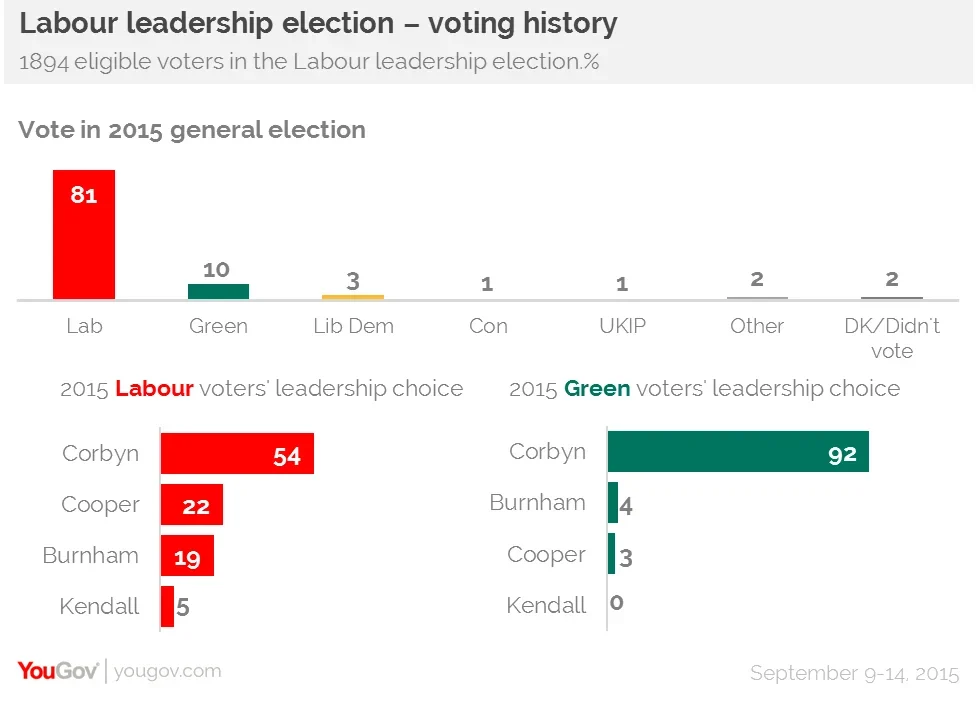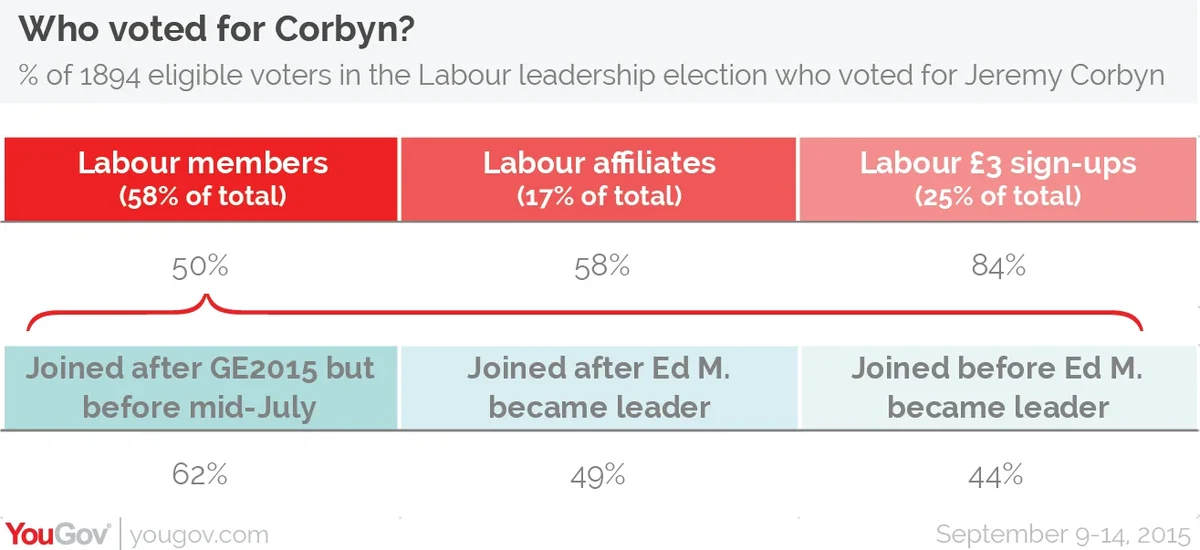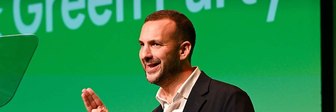Post-election analysis reveals the true composition of the Labour leadership selectorate and their voting preferences
Eight weeks ago, when the Times reported YouGov’s first survey showing Jeremy Corbyn ahead in the race for Labour’s leadership, with 43% support, reactions ranged from shock to incredulity.
Before then, MPs, pundits and bookmakers all agreed: Mr Corbyn did not stand a chance. Even afterwards, suspicions were widespread that we had got it wrong.
If anything, our second poll, five weeks ago, showing Mr Corbyn not just winning, but with 53% of first-choice votes and heading for a landslide victory, shocked the political world even more. But this time the money followed our numbers. Within hours, bookies had shifted their odds from a 30% chance of a Corbyn victory to 70%.
We always knew that the risk of error was higher than usual. Not only were we polling a tiny section of Britain’s population – just over 1% of all adults – but uncertainty persisted to the end about who precisely had the right to vote. However, the size of YouGov’s half-million strong panel, together with our programme of constantly updating our information about them, allowed us to identify with reasonable confidence which of our respondents were full members, and which had signed up specifically for this election.
When we adjusted our second survey to take account of the late sign-ups, we raised Mr Corbyn’s projected share to 57%. His actual vote share of 59.5% confirms research we have conducted in the past few days, which indicated that Mr Corbyn’s support continued to edge up.
However, the purpose of polls on these occasions is not just to show who is ahead, but to explain why. Our earlier research showed that Labour’s selectorate was keener on picking a leader who shared their, mainly left-wing, views rather than someone who was likely to lead Labour to victory in 2020.
Our latest survey throws further light on Mr Corbyn’s triumph.
Around 70,000 people who voted in the leadership election did NOT vote Labour in May's general election. 40,000 of them voted Green. Fully 92% of these Green voters backed Mr Corbyn. We estimate that the other non-Labour voters were: Liberal Democrats: 10,000; Conservatives: 3,000; Ukip: 3,000; other parties 6,000; did not vote 8,000. It is, of course, a matter of debate how many of these are genuine converts, and how many infiltrated the election for more cynical purposes. But the numbers are far larger than the 4,000 or so whom the party has reported excluding as infiltrators.

However, if we count only the 350,000 who voted Labour in May, Mr Corbyn would still have won 54% of the vote - enough to have given him a big victory on the first count.
The one group noticeably less keen on Mr Corbyn were long-standing Labour Party members. Only 44% of those who have been members since before Ed Miliband became leader in 2010 gave their first preference to Labour's new leader. Had only they voted in the leadership election, it is touch-and-go whether Mr Corbyn would have won at all. However, pre-2010 party members comprised only one-quarter of the selectorate.

Not only did affiliated trade unionists, and people who paid three pounds to take part back Mr Corbyn by big majorities; he also enjoyed the backing of around 60% of the near-100,000 people who have joined Labour as full members since May.
An edited version of this commentary appeared in the Times using pre-weighted figures
See July Labour Leadership results
See August Labour Leadership results
PA image






